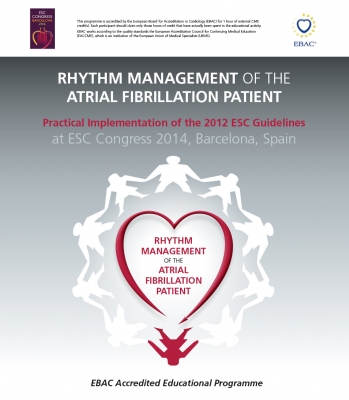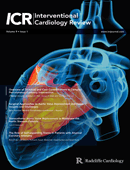Why Keeping Up To Date Is Critical For Cardiologists

Cardiology is evolving rapidy and it’s critically important that healthcare professionals keep up to date, not only in their own therapeutic areas, but also in what is happening elsewhere across the spectrum of cardiovascular disease. The upcoming ESC Congress 2014 will help health care professionals, clinicians, scientists, epidemiologists, technicians, care opinion leaders and policy makers an opportunity to top up their knowledge about all areas of cardiology and integrate and liaise with peers as well as presenters of the best late-breaking trials such as PARADIGM-HF, SOLID-TII 52 Trial, SIGNIFY, ODYSSEY COMBO II – ODYSSEY FH I and FH II, ATLANTIC, CvLPRIT. Delegates also have the opportunity to mingle with some cardiology legends including E Braunwald, A Carpentier, Sir Rory Collins and P Widimsky.
EBAC accreditation Educational Programmes 2014 confirm the scientific & educational quality of a programme, and allow the participants to receive Continuing medical education (CME) credits for the time spent in the educational activity. EBAC is the European Board for Accreditation in Cardiology and it accredits international CME activities (Events, CD ROM, Web CME, CME articles) in cardiology in Europe. EBAC accreditation Educational Programmes 2014 have robust criteria and clear procedures for accreditation of international CME/CPD activities in cardiovascular medicine. EBAC accreditation means the scientific content of a CME activity was reviewed and approved by an independent board of European experts in cardiology and that the CME provider has fulfilled the EBAC quality requirements. It also means that the programme has been developed for an international audience, its scientific content is of high quality, it complies with the EACCME Guidelines on CME, and is free of commercial bias.
In special daily sessions at the Congress, entitled: “Guidelines in Daily Practice”, delegates can also learn about recent guidelines, what they really mean and how to implement them. A symposium supported by Biosense Webster, will also be looking at the ESC Guidelines 2012, a focused update of the ESC Guidelines for the management of atrial fibrillation. The ESC Guidelines 2012 is a standalone publication and is an update to the 2010 European Society of Cardiology guidelines for the management of AF.
In 2010 when the ESC Guidelines were first issued, it was already identified that an update would be necessary in 2012 because of new drug approvals and results from major trials due to be released around that time. For example, AVERROES or Apixaban Versus acetylsalicylic acid (ASA) to Reduce the Rate Of Embolic Stroke in atrial fibrillation patients who have failed or are unsuitable for vitamin K antagonist treatment and trials which looked at the efficacy of various drugs for managing atrial fibrillation patients.
Rhythm Management Of Atrial Fibrillation is an important aspect of managing AF which includes identifying which patients should be selected for catheter ablation. Perhaps the most important changes to the 2010 guidelines are the recommendations for opportunistic screening, the role of NOACs as broadly preferred over VKAs for the prevention of stroke and the acceptance of catheter ablation of AF as first line therapy. Rhythm Management Of Atrial Fibrillation, whether it be by antiarrhythmic drugs or catheter ablation, is indicated to relieve symptoms associated with AF.
